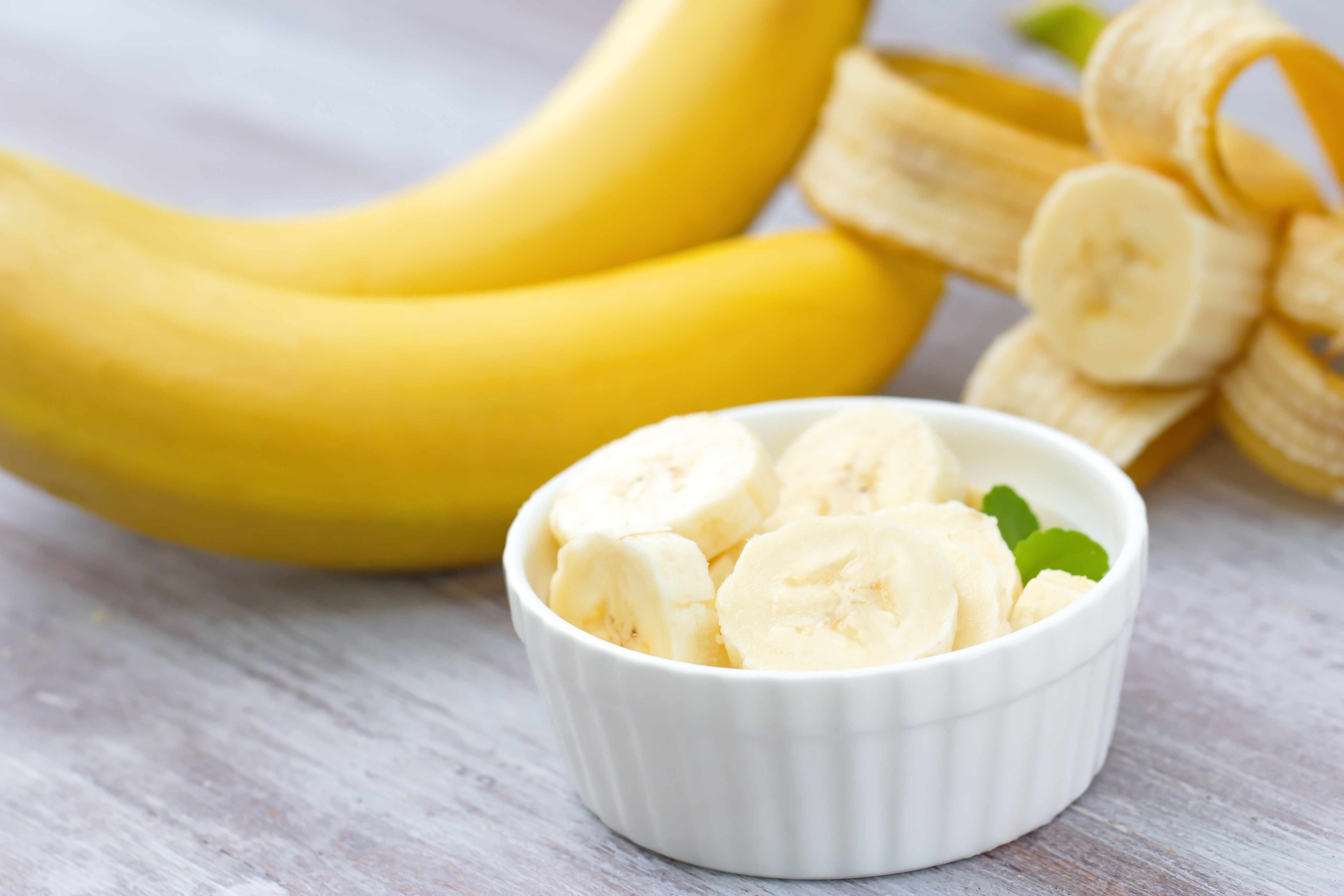-
Go bananas for…bananas
 This article is written by Joanne Hutson, a Mayo Clinic Health System registered dietitian and certified diabetes educator.
This article is written by Joanne Hutson, a Mayo Clinic Health System registered dietitian and certified diabetes educator.
This time of year, we in the Midwest depend on fresh fruits shipped in from warmer climates. Many of us look forward to when we can enjoy locally grown produce as spring and summer arrive. Our grocers do a great job providing a wide array of fresh fruits; however, the cost may be high and the flavor sometimes a gamble.
Bananas are one staple fruit we can count on to provide consistent flavor and quality all year round at a stable, affordable price, even though they travel quite some distance to reach our markets. At an average price of 39 cents a pound, an average banana costs about 12 cents. I cannot think of any comparable food available for this price — can you?
Banana facts
More than 100 billion bananas are eaten each year worldwide, and Americans eat an average of 27 pounds per person every year. That's equivalent to about 90 bananas a year. The majority of bananas Americans eat come from Latin and South America. However, they are grown in more than 100 countries with tropical climates.
Bananas do not need to ripen on the plant, so they are picked and exported when green. The firm green peel helps prevent bruising during shipping. Once picked, the ripening process slowly begins. Ethylene gas is produced inside the banana, which starts to change the starch to sugar. This softens and sweetens the flesh, while the peel changes from green to yellow. As ripening continues, brown spots appear, and eventually, the entire peel turns brown.
Americans eat more bananas than oranges and apples combined. They are easy to chew and digest, and their natural sweetness makes them a favorite food for all ages. They are very convenient and portable — in their own sealed package. Simply grab and go for a quick mini breakfast or snack.
Nutrition
From a nutritional standpoint, not many foods measure up to the quality and quantity of nutrients packed inside a banana. A medium-sized banana provides about 105 calories with virtually no fat, cholesterol or sodium. They are an excellent source of potassium, a mineral important for regulating blood pressure, fluid balance, heart health plus good nerve and muscle function. A banana can help prevent muscle cramps after exercise. They also provide a good source of vitamins C and B6, as well as magnesium.
Bananas are an excellent source of carbohydrate, our main source of energy. An average seven-inch banana contains about 27 grams of total carbohydrate. For persons with diabetes, bananas can be worked into one's overall carbohydrate-controlled meal plan as part of a meal or as a healthy snack to aid with stable blood sugars.
The overall carbohydrate content of a banana does not increase as a banana ripens, but there may be a slightly quicker rise in blood sugars from a very ripe banana compared to a less ripe one. This is typically not significant enough to make a difference or warrant eating green bananas. The size of the banana has a larger effect on the blood sugar rise than the ripeness, due to the fact that it would contain more total carbohydrate grams.
An average banana also contains about 3 grams of fiber, which can help provide a feeling of fullness plus aid the digestion process by providing prebiotics and probiotics. These insoluble fiber components help maintain healthy gut bacteria and enzymes needed to digest foods and benefit the immune system.
Preparation and consumption
When bananas have become overly ripe, they can be peeled, mashed and frozen for use later in baked goods such as muffins, pancakes and smoothies. You can also place them whole — peel and all — in a zip lock bag and toss them in the freezer. When ready to use in baking, thaw under warm water, in the microwave or at room temperature, slip the flesh out of the peel and mash. Due to their natural sweet and moist qualities, bananas make a great addition to muffin and quick bread recipes, where sugar and fat ingredients can often be reduced to enhance nutritional quality.
My personal favorite way to eat a banana is to spread a thin layer of peanut butter on it. The protein and carbohydrate combo satisfies my hunger between meals. Other easy ways to incorporate bananas into your diet is to add slices to oatmeal; unsweetened, ready-to-eat dry cereal; low-fat yogurt; low-fat cottage cheese; smoothies and low-fat vanilla pudding.
I hope you take advantage of this highly nutritious, economical, accessible, convenient fruit on a routine basis.
BANANA OATMEAL PANCAKES RECIPE
Servings: Six (12 pancakes)
1/2 cup old-fashioned rolled oats
1 cup hot or boiling water
2 tablespoons canola oil
2 tablespoons brown sugar
1/2 cup whole-wheat flour
1/2 cup all-purpose flour
1 1/2 teaspoons baking powder
1/4 teaspoon baking soda
1/4 teaspoon salt
1/4 teaspoon ground cinnamon
1/2 cup skim milk
1/4 cup fat-free plain yogurt
1 mashed banana
1 egg
In a large bowl, combine the oats and hot water. Let sit for one to two minutes until the oats are creamy and tender. Stir in oil and sugar; set aside to cool slightly.
In a medium bowl, combine the flours, baking powder, baking soda, salt and ground cinnamon; whisk to blend.
Add the milk, yogurt and banana to the oats and stir until well-blended. Beat in the egg. Add the flour mixture to the oat mixture and stir until just moistened. Place a nonstick frying pan or griddle over medium heat. Once hot, spoon 1/4 cup pancake batter into the pan. Cook for about 2 minutes, until the top surface of the pancake is covered with bubbles and the edges are lightly browned. Flip the pancake and cook for another two to three minutes. Repeat with remaining pancake batter.
Nutrition information per two-pancake serving: 192 calories, 6 grams fat, 0 grams saturated fat, 0 grams trans fat, 4 grams monounsaturated fat, 302 milligrams sodium, 30 grams total carbohydrate, 2 grams dietary fiber, 6 grams protein
Source: Mayo Clinic
Related Articles







